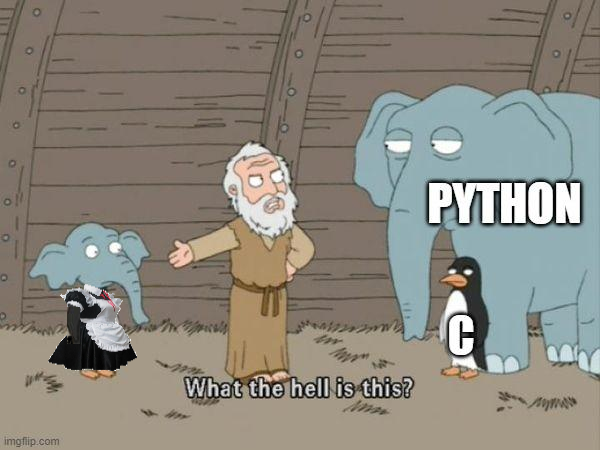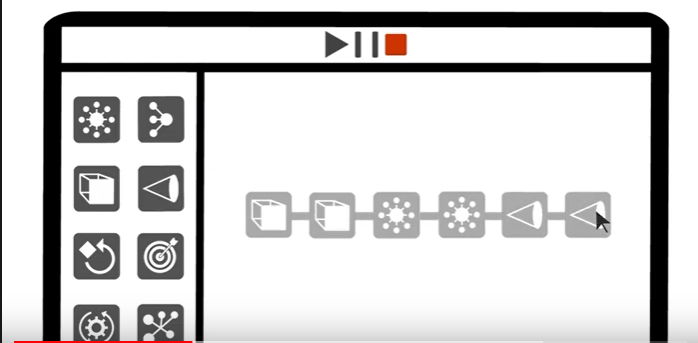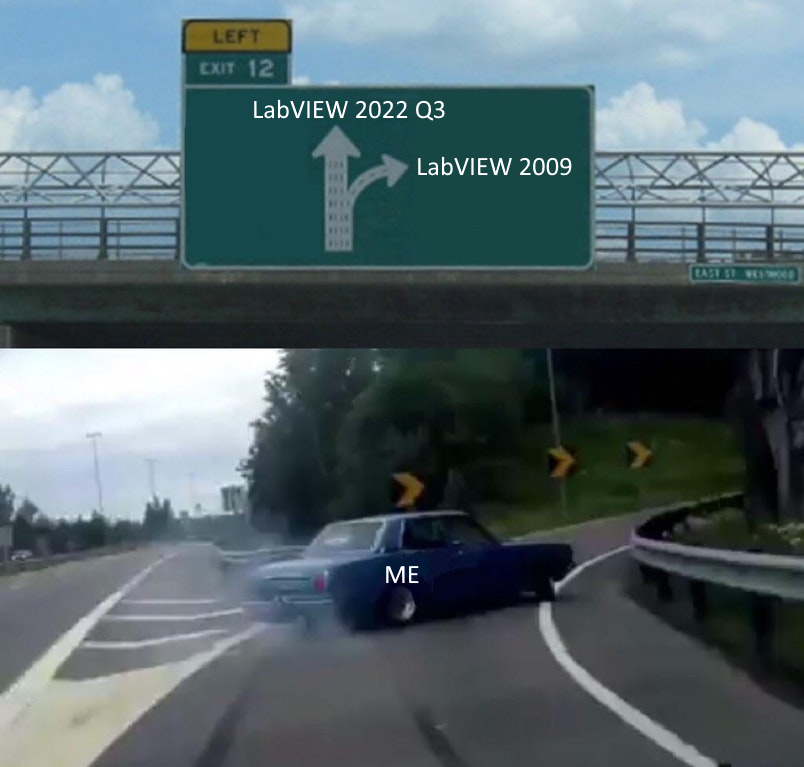-
Posts
4,996 -
Joined
-
Days Won
311
Content Type
Profiles
Forums
Downloads
Gallery
Everything posted by ShaunR
-
All of the synchronisation primitives use occurrences under the hood. Occurrences are the most efficient but hardest to use since they don't carry any data. On a side note (and people will hate/flame/badger me for this). If you have a write one and read many architecture then the most efficient for task switching is a global variable (but memory suffers).
-
It's been a very long time since I did any real-time stuff but If I'm reading your charts right... The Linux nisysapi-mDNS is a bottleneck? Is that due to your code looking up addresses or an artifact of the system in general? I also noticed the variable publisher in your first image. Are you using network variables?
-
The hardest to figure out will be booleans which in JSON can be true, false or NULL. While you can get away with converting null to NAN for output to LabVIEW, be aware that NAN is specifically excluded for encoding as a numeric. RFC4627 section 2.4
-
-

Let’s make Machine Learning easy with scikit-learn on LabVIEW
ShaunR replied to Youssef Menjour's topic in LabVIEW General
Then you might want to take a look at Express VI's. There is an Express palette where many of the acquisition and signal analysis fundamental uses are available so that you can see how they operate. You would be able to create create VI's that operate like your marketing guys portray. The user could then configure each node in a pop-up design-time dialogue. Express VI's are for novice users and those that have minimal programming expertise who you seem to be targeting.- 16 replies
-
- labview
- machine learning
-
(and 3 more)
Tagged with:
-

Let’s make Machine Learning easy with scikit-learn on LabVIEW
ShaunR replied to Youssef Menjour's topic in LabVIEW General
Is that some marketing guy's idea of what it would probably look like to use or do you actually have that interface?- 16 replies
-
- labview
- machine learning
-
(and 3 more)
Tagged with:
-
-
Oooh. Scary. Perhaps I should stop using LabVIEW 2009 and get a subscription? Your budgetary arguments to management have no power here
-

Image Editing - Looking for an Easy to Use Plugin
ShaunR replied to martin_g's topic in User Interface
You know NXG has been discontinued, right? Then Bitman is what you want. The native LabVIEW image tools can be very cumbersome but Vugies toolkit allows layering, advanced processing and filtering (if you want to try it) Then you are almost there by the sounds of it. As I have said in many other threads, I have dispensed with LabVIEW UI's completely in favour of HTML/Javascript. I use a proper web browser (not the LabVIEW UI or embedded browser widget) and use LabVIEW as a back-end linked with websockets. -

Image Editing - Looking for an Easy to Use Plugin
ShaunR replied to martin_g's topic in User Interface
Oooh. Is that NXG? I don't think there is a lot off-the-shelf. You can interface to GIMP via TCP or ImageMagick as command line but that's probably just as much hassle as writing a simple one of your own and probably too restrictive except for the standard things of cropping and resizing for on-the-fly. It looks like you use ROI's so maybe the NI Vision toolkit would be the best option (if it works with NXG) By the looks of it, you don't really have that much functionality to implement. I, personally, would bite the bullet and implement it either as LabVIEW code (probably using Vision Toolkit or Bitman) or as HTML/Javascript (there are quite a few Canvas drawing API's and toolkits). For .NET there is also a few examples for simple editors and drawing on Winforms. You could call the same functions from LabVIEW nodes to draw on an image control in the FP .NET container. All of that is not what you really want to hear though. If you listed the requirements for your image editor, you may get really lucky and someone might write one just for giggles. But it's unlikely to be in .NET unless they are really a glutton for punishment as few of us use it. -
It's a skill we are born with over here. Along with back-handed compliments and damning with faint praise.
-
You know as well as I do that marketing speak isn't supposed to be intelligible. It's purpose is to say absolutely nothing in a veneer of condescension.
-
I think this reveals the answer... NI were concentrating on their systems' solutions like Systemlink, NI System Configuration and that other obese LabVIEW thing I never used.
-

Labview anti-pattern: Action Engines
ShaunR replied to Daklu's topic in Application Design & Architecture
We will see. I've crystalised one interpretation so it up the the OP to refine the question and provide an example of what he has. -

Labview anti-pattern: Action Engines
ShaunR replied to Daklu's topic in Application Design & Architecture
I disagree. A FGV is a number of methods around some sort of global variable. An AE is usually (but not exclusively) an extension of that around some sort of global resource which may or may not be a global variable. A LVPOOP class is a number methods around a local variable (the class cluster). Therefore I think the question in this context is "how do I make a class with a number of methods around a global variable/resource"? (A.K.A Singleton Pattern) -

10Gb Ethernet
ShaunR replied to infinitenothing's topic in Remote Control, Monitoring and the Internet
That's not good at all. With some fiddling you might get 4-5Gb/s but that's what you expect from a low-end laptop. Are you sure it's Gb/s and not GB/s? You are hoping for at least 20Gb/s+. -

10Gb Ethernet
ShaunR replied to infinitenothing's topic in Remote Control, Monitoring and the Internet
Running both client and server on localhost, the CPU usage is about 30% across all cores with one of the cores maxing at about 70%. I would suggest you try the same and see if you still get 100%. Doing this will isolate the network layers from the software. I suspect you will find that your 2GB limit is also present on localhost. -
I'll let you fight your argument in court. Until then, I'll just offer anyone who wants the code a zip file of my build.
-
You are also required to supply the source and compile environments of the vanilla LGPL code even when just dynamic linking and that can be quite big in size. While one may argue it's merely a maintenance overhead, never-the-less, it is an overhead keeping track of (and version control of) other peoples source AND the specific compilation environment one used.






